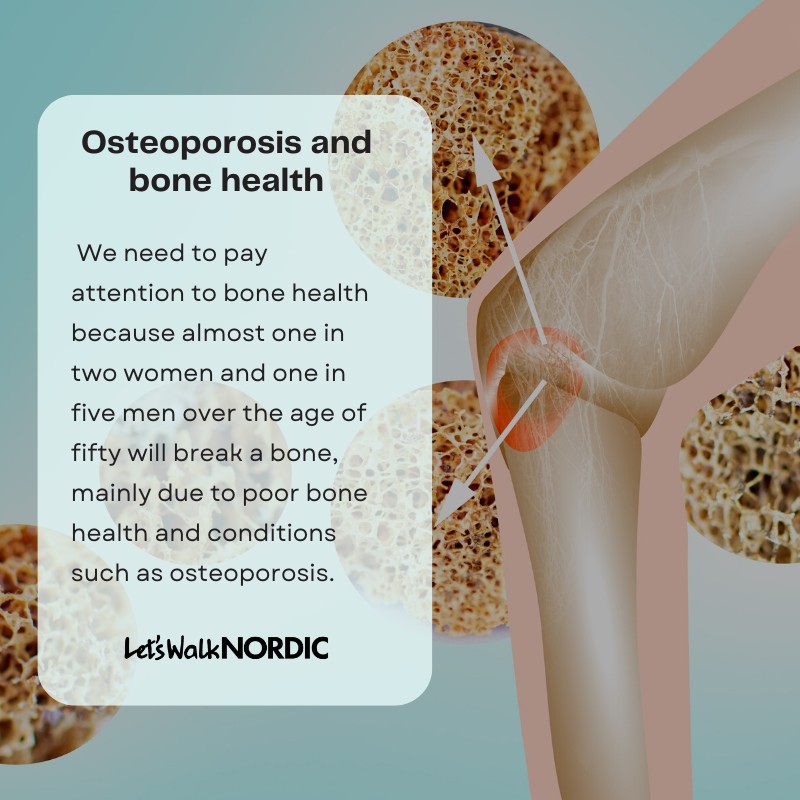We need to pay attention to bone health because almost one in two women and one in five men over the age of fifty will break a bone, mainly due to poor bone health and conditions such as osteoporosis.
Building exercise into our lives is one of the ways we can help keep our bones strong. Simply being physically active can reduce your chances of a hip fracture by 68%.
The whole-body nature of Nordic walking makes it an ideal weight-bearing, bone-strengthening exercise. Research supports this. In one study, post-menopausal pre-diabetic women Nordic walking two to three times a week were able to maintain their bone mass and density in their lower spine and thigh bone, while those in the control group who maintained their daily activities were not. The denser your bones, the stronger they generally are and the less likely they are to break.
The benefits extend to other risk fracture sites, like the arms. Neither walking nor jogging directly increases the load on your arms, Nordic walking does. The movement of pushing the pole against the ground increases arm strength and improves bone density in this area.
All in all, Nordic walking is a great exercise if you are worried about your bone health or managing osteoporosis.
Vicky
References:
Age UK https://www.ageuk.org.uk/information-advice/health-wellbeing/conditions-illnesses/osteoporosis/
Physical activity: Applying All Our Health. (GOV.uk, 2022), www.gov.uk/government/publications/physical-activity-applying-all-our-health/
X Du, C Zhang, X Zhang et al, ‘The impact of Nordic walking on bone properties in postmenopausal women with pre-diabetes and non-alcohol fatty liver disease’, International Journal of Environmental Research and Public Health, 18/14 (2021), http://doi.org/10.3390/ijerph18147570
T Kato, T Tomioka, T Yamashita et al, ‘Nordic walking increases distal radius bone mineral content in young women’, Journal of Sports Science and Medicine, 19/2 (2020), 237–244, www.ncbi.nlm.nih.gov/pmc/articles/PMC7196759



